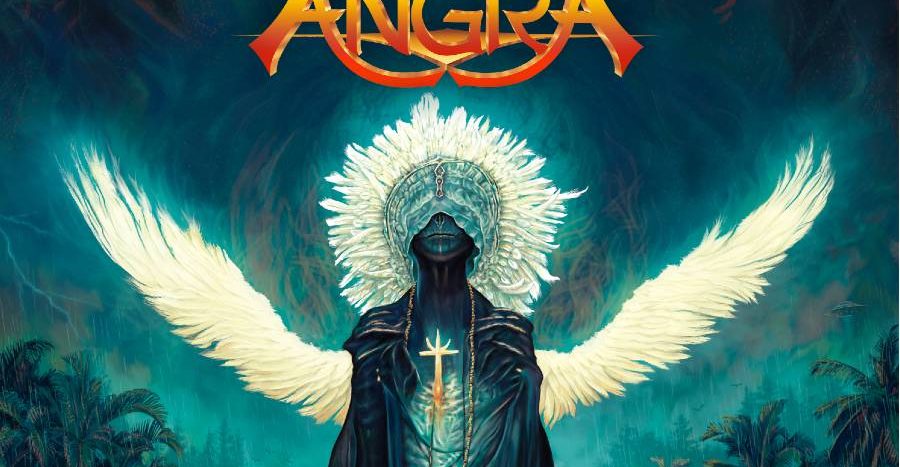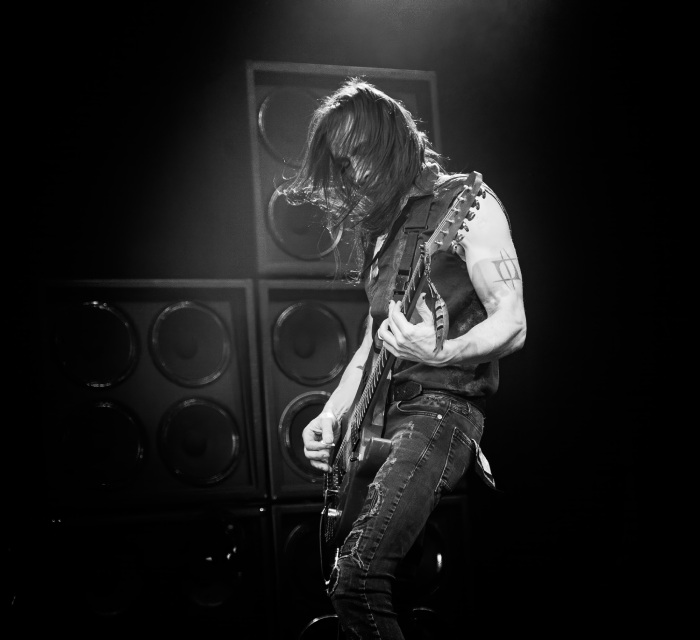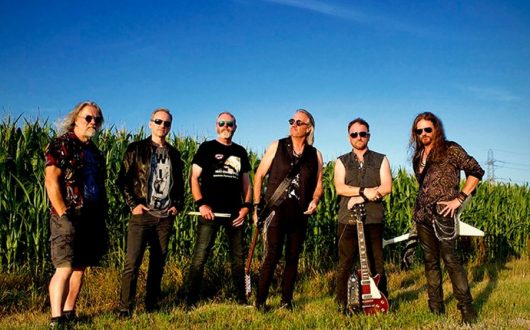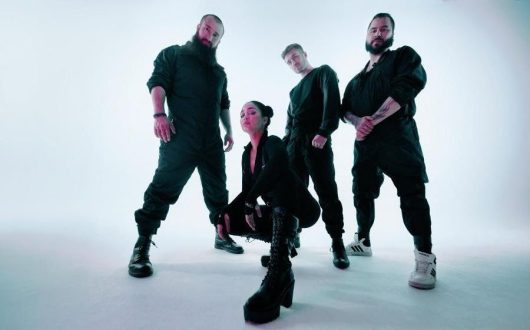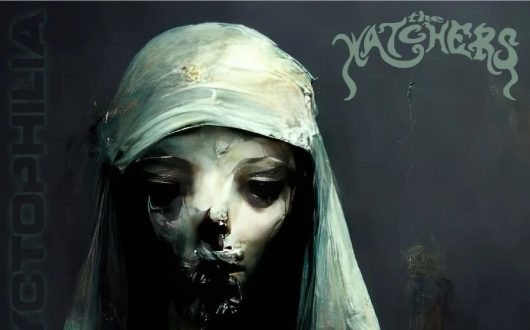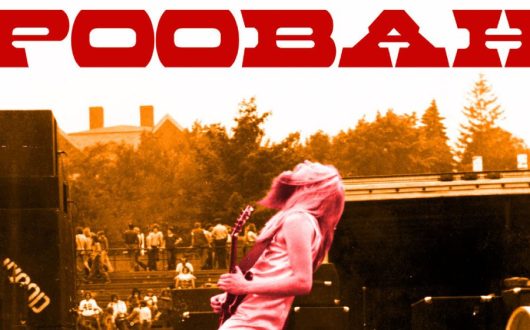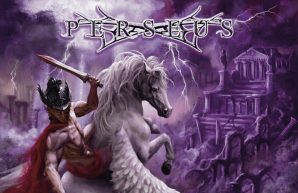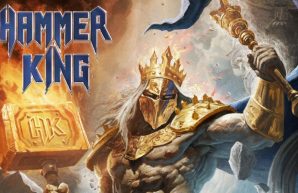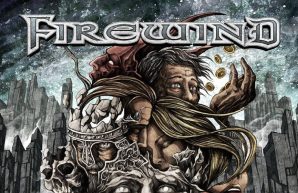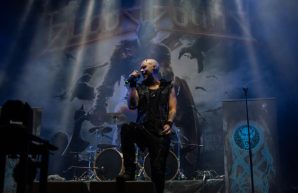Released By: Atomic Fire Records
Release Date: November 3rd, 2023
Genre: Progressive Power Metal
Links: https://angra.net/
Line Up:
Fabio Lione – Vocals
Rafael Bittencourt – Guitars
Marcelo Barbosa – Guitars
Felipe Andreoli – Bass
Bruno Valverde – Drums
Tracklist:
1. Cyclus Doloris
2. Ride Into the Storm
3. Dead Man on Display
4. Tide of Changes – Part I
5. Tide of Changes – Part II
6. Vida Seca
7. Gods of the World
8. Cycles of Pain
9. Faithless Sanctuary
10. Here in the Now
11. Gneration Warriors
12. Tears of Blood
Quite a few bands I’ve previously had mixed experiences with have left me very impressed in recent years, and now I was hoping for Brazilian progressive power metal band Angra to be the latest in that trend. I’ve always been a bit torn on the band in the past, often enjoying individual tracks on each album, while only being fully enthralled by their masterpiece, Temple of Shadows. Their most recent album, Ømni, while still not as good as that album, was a definite step in the right direction, and easily my favorite work by the band since then, so I was hoping to see them step up their game even further next time around. Their tenth full-length release, Cycles of Pain, is set to be released later this week, and after several listens, I’m very happy to say that while it’s not necessarily the style I would normally have preferred from the band, it’s a fantastic album in its own right, and manages to continue the band’s resurgence, as easily their best release in nearly two decades.
Angra have always been fairly unique when it comes to power metal, in that they’ve always had a surprising amount of slow, calm tracks with very little heaviness to be found, often falling pretty close to ballad territory. This has been true ever since their debut, Angels Cry, and has remained the case through every era of the band, so it’s no surprise that Cycles of Pain continues that trend. So far in their current era, Secret Garden was an extremely light album, with very little speed or heaviness for most of its duration, while Ømni was more varied, with a few fast-paced tracks, some balladry, and a few rather unique, experimental tracks. Cycles of Pain falls somewhere in the middle, in that it isn’t quite as varied as its immediate predecessor, but it does manage to throw in some of the band’s fastest, heaviest material in quite some time, along with a couple of rather unique and complex tracks, with the band going further into their prog elements, while incorporating their typical Brazilian percussion, which is used very effectively on this album. Unsurprisingly, though, there are at least four tracks I’d personally consider to be ballads, with how little heaviness or variance in tempo they show, and these tracks are especially prominent in the second half of the album, most notably towards the middle. In effect, the album at times feels less varied than it is, with a lot of the slow to mid-tempo tracks being placed so closely together, though thankfully, the faster tracks are spread out fairly nicely, so you do get an occasional change of pace.
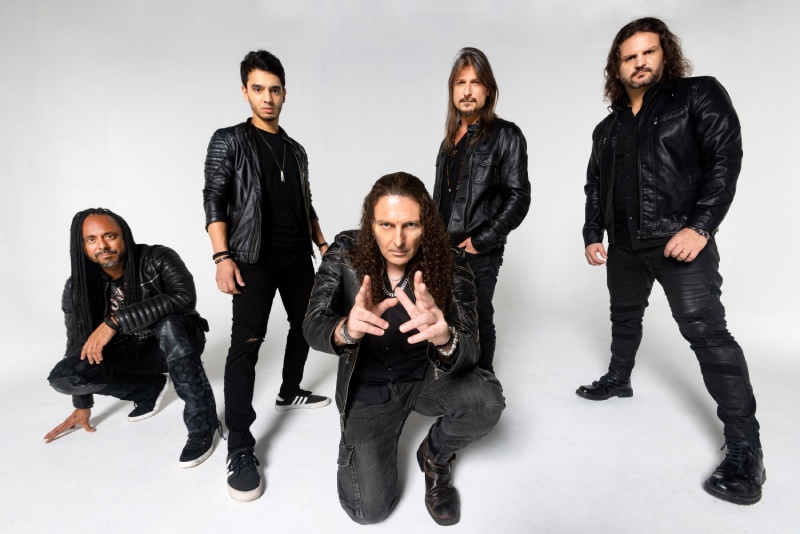
More importantly, though, performances are excellent across the board, while the songwriting in particular feels more consistently strong and more inspired than anything else the band has done in ages. The faster, heavier tracks, as well as the more progressive ones, are my favorites, but even the slower tracks are very well written, and very well performed and feel more inspired than I was expecting. Some tracks took a bit of time to grow on me, particularly in that middle portion, but over time I’ve come to love every track on the album. The musicianship is fantastic, with guitarists Rafael Bittencourt and Marcelo Barbosa at times delivering some of the band’s heaviest, most technical, and most complex instrumental work to date, while at other times the guitar work is very melodic, and even very subdued and understated on some tracks, but it’s all very well done. Likewise, keyboards are used effectively, mostly as a background flavor, though they do take over at times, particularly on some of the softer tracks, while drummer Bruno Valverde is equally good when going full speed ahead, as he is at slowing things down and providing some more complex, sometimes groovy rhythms. The use of percussion is also very effective, especially on one particular track, which I’ll get more into a little bit. Production is also excellent, with everything being mixed in perfectly, so there are certainly no complaints there. Vocalist Fabio Lione is very well known at this point, both to Angra fans and power metal fans in general, so it’s no surprise that he delivers a fantastic performance across the entire album, at times sounding very smooth and more restrained, while at other times sounding quite intense and powerful. He sounds right at home with the band, three albums in, and as always, he’s by far my favorite vocalist they’ve ever had.
It’s no surprise the album is often on the slow, darker, and more somber side of things, considering the main theme of the album is the process of going through pain, the dangerous lows it can lead to, as well as how to recover from it. The lyrics get pretty dark points, but there are also moments where they can be very uplifting, and I consider this to be one of the band’s stronger efforts in that department. Perhaps because the lyrics are so strong, songwriting follows suit, and the album is excellent from start to finish, regardless of the style of music being presented from track to track.
As usual, there’s a brief, calm intro track, which is nice but doesn’t offer up anything particularly memorable. However, the quality immediately picks up hugely with the opening track and lead single “Ride Into the Storm”, a song which feels like a glorious mix of classic Angra, Rhapsody, and even a bit of Symphony X, with how heavy and complex some of the guitar work is. The track moves at a fairly upbeat pace through the verses, with some of that heavy guitar work, paired with some great vocal melodies, while the chorus is lightning fast and full of some epic symphonic arrangements and choral vocals, which is where the Rhapsody comparison comes in (especially when considering who the lead singer is.) The instrumental section is quite intense and progressive, and very much reminds me of some of the heavier material on Aurora Consurgens, an album I found to have some massive highs and disappointing lows.
Thankfully, though, this album is all killer, no filler, and the fun continues with “Dead Man on Display”, one of the more complex, progressive tracks on the album, while still being quite fast-paced for most of its duration. It starts slow, with a very dark, atmospheric instrumental opening, but the heavy guitars and pounding drums kick in about a minute into the track, and from there the track moves along at a fast pace during the verses, with some rather dark and heavy riffs, mixed in with some powerful vocals. The chorus speeds up further and is quite epic, with some very nice keys and excellent vocal melodies, and then the instrumental section gets very complex, with multiple tempo changes and lots of craziness, while remaining thoroughly engaging throughout.
Next is the two-part second single “Tides of Changes”. The first part is very quiet, with some very light guitar work and even softer vocals, providing a rather atmospheric run through the chorus, before the second part kicks in, and the guitars get just a tad heavier. In truth, this is one of the tracks I’d consider a ballad, as while it does have slight bursts of heaviness (particularly in the solo section in the second half), it stays very slow and calm for most of its duration, with the verses especially having fairly minimal instrumental work, while the chorus is a tad more involved, but still very light, melodic and very vocal driven, with an excellent, emotive performance by Lione. The instrumental section does get more complex, though, and it’s one of a few tracks where the guitar work reminds me a bit of Dream Theater while having a slight classic prog feel to it, which is cool. It never gets too heavy, though, and the pace remains slow the whole way through, Overall, it’s a track that took a lot of time to grow on me, though I’ve come to love it after several listens.
The pace only very slightly picks up with “Vida Seca”, the first track to feature some of that distinct, Brazilian percussion the band is known to use from time to time. It provides a nice rhythm to the track, which remains fairly slow, but slightly less so than the previous track, with a little bit of forward momentum in the guitars and drums. Likewise, the track is fairly soft throughout, but slightly heavier than the previous track. If anything, it’s a very atmospheric track, with a very distinct feel to it, amplified further by the percussion and some very light, but effective symphonic elements. Early on, there are some guest vocals by Brazilian performer Lenine, who sings in Portuguese, and his unique, deep voice helps add even more flavor to the track. The chorus is fairly soft, but also quite memorable, as Lione delivers a fantastic performance, and while the instrumental section isn’t overly special on the whole, there’s some very beautiful guitar work towards the end. Next is one of my personal favorites, the third single “Gods of the World”. This track has a very classic power metal feel to it, especially the heavy, yet melodic riffs and the thundering drums. At times, there’s some lighter guitar work, which very much reminds me of a certain sound DT uses at times on their softer tracks (most notably before the opening verse, and during the solo section), and there are some symphonic elements, especially in the chorus, but overall it’s a very fun, fast-paced power metal track with an extremely catchy and entertaining chorus.
That previous track proves to be the odd one out when it comes to this portion of the album, as things calm down once again, and stay that way for a while. The title track is a light, atmospheric, and ambient piano-driven ballad, where the piano is used effectively to create the mood of the track. There are some light drums and guitar work here and there, especially during the fantastic solo section, but it’s largely a piano-driven track, with the vocals being especially excellent during the chorus, while the lyrics are very emotional and hard-hitting. This is another track I wasn’t overly thrilled with at first, but it’s since grown to become a favorite. Perhaps the most unique track on the album is “Faithless Sanctuary”, a more mid-paced track, which is more upbeat than any of the slower tracks on the album, without ever fully speeding up. However, what makes it unique is once again the percussion, which is mixed in with some sounds of nature early on, and that instantly gives the track a very distinct feel. As the track progresses, it becomes more complex and guitar-driven, with several moments where the DT influence is once again noticeable, especially in the instrumental section and one particularly intense vocal section in the middle. The percussion remains in effect for most of the track, and it’s used in a way that’s hard to describe, but it works extremely well, and is one of the highlights of the track, along with the guitar work. It’s a very complex track overall, as well as one of the most progressive tracks on the album, with some of the best musicianship I’ve ever heard from the band, and while the vocal sections aren’t as memorable, aside from that one section I mentioned earlier, they’re still quite nice overall.
Another ballad is next, in the form of “Here and Now”, which opens up with some very nice, enchanting female vocals which help set the mood. As the track moves along, it feels like a classic prog rock ballad, with a very nice mix of keys and light guitar work, as well as a nice, catchy chorus, and some guitar work which once again has a very classic DT feel to it, with the instrumental section, in particular, being fantastic. One last heavy track arrives with “Generation Warriors”, and it’s another instant classic. This track has a very classic power metal feel to it, very much along the lines of Helloween, with some excellent melodic lead guitar work, super fast drums, and a very fun, catchy chorus. The pace is fast throughout, with the verses flying by, while the chorus is one of the highlights, with some of the best vocal melodies on the album. Once again, the instrumental section is very complex and technical, with multiple tempo changes and it has a very proggy feel to it, while the rest of the track is straight-forward classic power metal at its best.
Closing out the album is “Tears of Blood”, which includes guest vocals from Amanda Somerville, as well as a piano performance by Juliana D’Agostini. The latter in particular shines, giving the track a very modern classical feel with her dark, atmospheric piano, and this is only enhanced by the symphonic arrangements and Lione’s vocals, which have a darl, somewhat haunting quality to them. Of course, Somerville specializes in this type of music, so it’s no surprise she shines as well, giving the track a slightly gothic feel with her very low, semi-operatic vocals. The chorus is excellent, with both vocalists in top form, and there’s a very beautiful guitar solo later on, then towards the end there’s an incredible vocal section, where both vocalists get to show off their talent. It’s yet another track I wasn’t too sure of at first, but I’ve since grown to love it, and it closes off the album perfectly.
Overall, Cycles of Pain is an album that’s sure to please longtime Angra fans, as it’s easily the best work the band has done in quite some time, offering up a mix of some of their best speedy power metal material in ages, combined with the kind of slow, emotional and atmospheric progressive metal they’ve leaned more towards on recent albums, while of course having plenty of softer material as always. Songwriting is more consistent than it’s been in a long time, and performances are superb, as always. Anyone interested in a prog/power metal album with some excellent vocals and instrumental work, and not afraid of extended softer portions, would be well recommended to give this album a listen, as it’s fantastic from start to finish. I’ve had a bit of a love/hate relationship with this band in the past, but I enjoyed their previous album quite a bit, and this album is a big step up from that, so even though I don’t see Temple of Shadows ever being topped as their masterpiece, I feel better about the band as a whole now than I ever have before!
Ratings: 9/10
Written by: Travis Green
My Global Mind – Staff Writer
Travis Green is a Canadian based writer for My Global Mind, with a particular passion for power metal, as well as an interest metal in all its forms.
